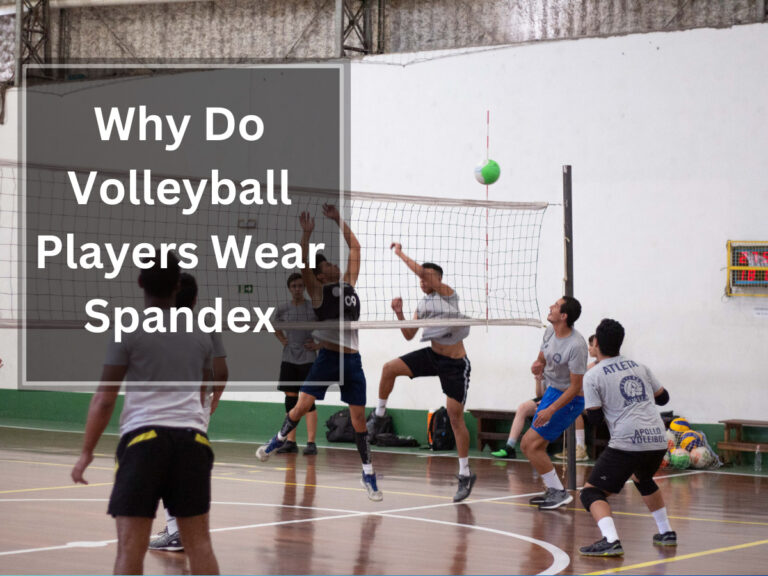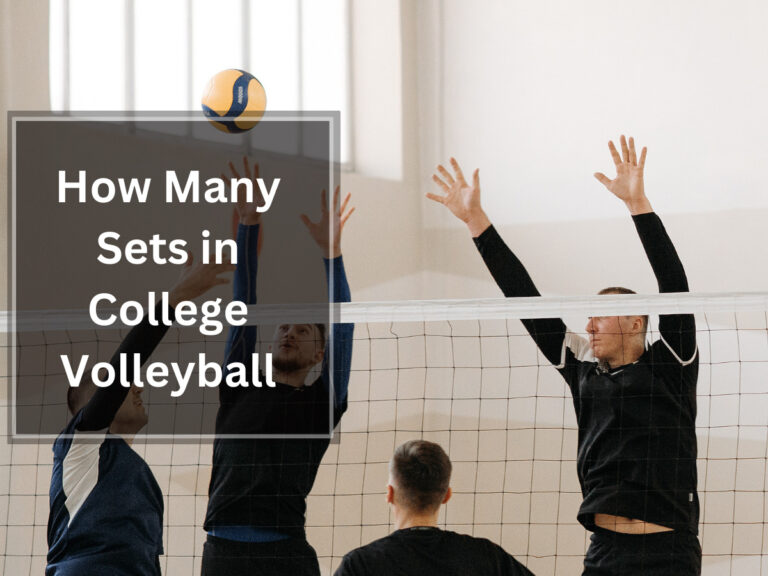What Volleyball Position Should I Play | An Exclusive Guide

As I stand on the volleyball court, surrounded by my teammates, I can’t help but feel a mix of excitement and uncertainty. The question that lingers in my mind is, ‘What volleyball position should I play?’ It’s a crucial decision that will determine my role on the team and ultimately affect our chances of success.
With so many positions to choose from – setter, libero, defensive specialist, middle blocker/hitter, outside hitter (left), opposite hitter (right) – it can be overwhelming to find the perfect fit. But fear not! In this article, we will explore the various positions and factors to consider when making this important decision.
By assessing my playing style, understanding team dynamics, and balancing personal goals with team needs, I am confident that I will find the right position for me. So let’s dive in and discover where I truly belong on the volleyball court.
Table of Contents
Understanding the various positions on a volleyball team
Now, let’s dive into the exciting world of volleyball positions and discover where you could truly shine on the court.
Understanding the various positions on a volleyball team is essential in evaluating individual strengths and finding the right fit. Each position comes with its own set of responsibilities and requires specific skills.
The benefits of trying different positions are immense as it allows players to explore their abilities and expand their knowledge of the game. By experimenting with different roles, players can discover new strengths and weaknesses, which ultimately helps them find their true potential.
Whether it’s setting, blocking, hitting, or defending, each position offers unique challenges and opportunities for growth. So don’t be afraid to step out of your comfort zone and try different positions – you might just find your perfect spot on the volleyball court.
What Things You Need To Consider
Consider exploring different pathways to discover the perfect fit for your volleyball journey, as if you were on a winding road leading to your destination. When determining the best volleyball position for yourself, it is important to assess your individual strengths and skills.
Consider what you excel at on the court and what comes naturally to you. Additionally, take into account team dynamics and positional requirements. Think about how your preferred position aligns with the needs of the team and how you can contribute to their success.
Balancing personal growth and team success is crucial in making a decision. Ultimately, finding the right volleyball position requires careful consideration and self-reflection. Embrace the process of exploring different positions to find where you can thrive both individually and as part of a team.
Assessing Your Playing Style
To assess your playing style, it is important to evaluate your strengths, weaknesses, and skills in relation to each position. Consider how you can contribute to team dynamics and meet positional requirements.
Experimenting in low-pressure games can provide opportunities to explore different positions and discover which one suits you best. It’s essential to be open-minded and willing to adapt as you try out new roles.
Remember that finding the right position involves a combination of self-reflection, feedback from coaches and teammates, and a willingness to learn and grow.
Embrace the process of discovering your true volleyball position and enjoy the journey towards becoming a valuable asset on the court.
Importance of Position Flexibility
Being open to trying different roles on the court can lead to new opportunities and growth in your volleyball journey. Assessing your personal capabilities and being willing to adapt to team needs are important factors in finding the right position.
Trying new positions has several benefits. It allows you to explore different aspects of the game and develop a well-rounded skill set. You may discover hidden talents or strengths that you were not aware of before. Additionally, trying new positions can help you understand the game from different perspectives and improve your overall understanding of team dynamics.
Being open-minded and flexible in your approach will not only benefit you individually but also contribute positively to the success of your team. So don’t be afraid to step out of your comfort zone and embrace the opportunity to try new positions on the volleyball court.
Limited Control over Assignment
Despite our desires and preferences, we often have little control over which position we are assigned to in volleyball. Coaches typically assign positions based on factors like height or initial impressions. This means that our personal preferences may not always align with the assigned position.
For example, taller players are often placed as middle blockers due to their height advantage. However, it’s important to evaluate our personal strengths and weaknesses when considering a position. We should also take into account team dynamics and positional requirements.
Additionally, the impact of height on position assignment cannot be ignored. Taller players may have more opportunities and success in certain positions like middle blocker or opposite hitter. Ultimately, finding the right position requires a balance between personal goals and team needs, as well as careful evaluation of individual capabilities and the demands of each position.
Making Decisions for Long-Term Success
As we consider the future and our long-term success, it’s crucial to carefully evaluate our options, weighing factors such as personal goals, team needs, and individual capabilities. When deciding on a volleyball position that will contribute to our overall success, there are several important considerations to keep in mind:
Considering height limitations: It’s essential to assess how our height may impact our effectiveness in certain positions. While taller players are often placed as middle blockers, shorter players may excel in positions like libero or defensive specialist.
- Evaluating team dynamics: Understanding the needs of the team is vital when choosing a position. Consider what role you can play that will complement your teammates’ strengths and enhance overall team performance.
- Balancing personal goals and team needs: Finding the right balance between personal aspirations and fulfilling the requirements of the team can be challenging. It’s important to strive for personal growth while also considering how your skills and abilities can best serve the team.
By taking these factors into account, we can make informed decisions about our volleyball position that align with both our long-term goals and the needs of the team.
Exploring Alternative Positions
When considering our long-term success in volleyball, it’s important to explore alternative positions that can provide valuable experience and contribute to our growth as players.
Experimenting with different positions offers numerous benefits, such as gaining a deeper understanding of the game and developing versatile skills. By trying new roles, we expand our knowledge of various positions and their unique demands. This exploration allows us to discover hidden strengths and weaknesses, enabling us to make informed decisions about our preferred position.
Moreover, trying different positions fosters personal growth by challenging us to adapt to new responsibilities and playstyles. It broadens our perspective on the game and enhances our overall understanding of team dynamics.
Ultimately, growth through position exploration can lead to increased opportunities and an enriched volleyball journey.
Importance of Personal Decision-Making
Take charge of your volleyball journey by making personal decisions about the position that suits you best.
Evaluating your individual strengths and weaknesses is crucial in determining the right position for you. Consider how your height may impact your position assignment, as taller players are often placed as middle blockers.
Balancing personal goals with the needs of the team can be challenging but essential for success. It’s important to find a position that not only aligns with your skills and abilities but also fills a crucial role on the team.
Collaboration with coaches and teammates can aid in decision-making, as they can provide valuable insights and guidance.
Remember, personal growth and team success go hand in hand, so choose a position that allows you to contribute to both while embracing the process of exploring and evolving in different positions.
Frequently Asked Questions
How can I improve my skills in multiple positions to increase my chances of making the team?
To improve my skills in multiple positions and increase my chances of making the team, I can focus on skill-specific drills, seek specialized coaching, and watch and analyze professional players in different positions for inspiration and learning.
Are there any specific physical attributes or qualities that are important for each volleyball position?
The role of height, agility, speed, strength, and power are crucial in different volleyball positions. Height is important for middle blockers, while agility and speed are key for liberos. Strength and power play a significant role in hitting positions like outside hitter and opposite hitter.
Can playing different positions in recreational or lower-level games help me determine the best position for me?
Exploring different positions in recreational or lower-level games can help me determine the best position for me. Adapting to different roles allows me to discover my strengths and weaknesses, leading to a more informed decision.
How do I balance my personal preferences and goals with the needs of the team when choosing a position?
When balancing my preferences and team needs, it’s essential to consider skill improvement. Understanding physical attributes for each position allows me to make informed decisions. Playing different positions in lower-level games can provide valuable experience.
What are some tips for long-term development and growth in a chosen volleyball position?
To achieve long-term development in a chosen volleyball position, I recommend focusing on improving technique through consistent practice. Gain experience in different positions to enhance versatility and understanding of the game. Additionally, prioritize communication and teamwork for overall growth.










